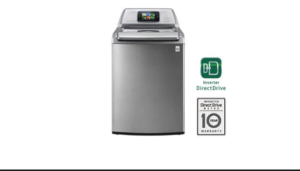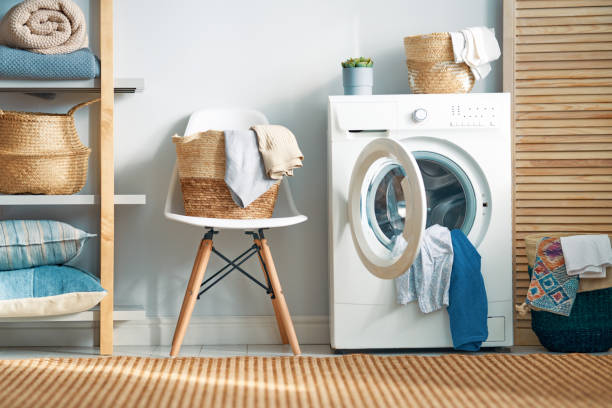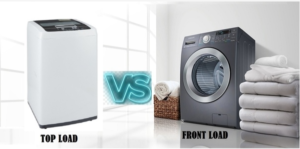Washing machines continue to develop with time, with many washers. Now featuring portable, high-tech, and adjustable features to make laundry day even easier. When it comes to remodeling your laundry room, there are two major types of washing machines to consider: top-load and front-load washers. While front-load washers are more popular owing to their energy economy and stackability, top-load washing machines have dominated the laundry scene since forever, till the date.

It is quite a dilemma that which washing machine would rather is the best washing machine? Well, here is what we are elaborating. In this blog, we will be discussing both top-loading and front-loading machines.
What is the difference between Top Load and Front Load Washers?
While they perform the same basic purpose, top-load and front-load washing machines have several important distinctions that may influence which one is best for you.

The primary distinction between front-load and top-load washing machines is their energy efficiency and water consumption.
If you want a more environmentally friendly choice, a front-load washing machine is probably a better fit, but if your goal is convenience, durability, and speed within your laundry routine, you may want to explore a top-load washing machine.
Front Load vs Top Load Washing Machine
Front-load washers use less water because the drum rotates, dragging the clothing through a smaller pool of water and detergent.
Top-load washing machines, on the other hand, must utilize a deeper pool to guarantee that the garments stay wet during the cycle, necessitating the use of additional water. The top-load washing machines are more user-friendly and deliver faster washes.
Top-load washers are a good option if you have back or body pain because they don’t require people to bend down to fill and empty them, and it’s also much easier to stop and add clothes mid-cycle, such as a forgotten item at the bottom of the hamper — a front-load washer, which requires pressing buttons and bending down, and most tiring thing is waiting for it to unlock the door.
Likewise, machine types, possess a feature or in other words, you can say a part known as an agitator (a Spindler fixed in the center of the washer with the plastic blades). The other type is the impeller which helps in the whirlpool.
An agitator though is tough at stains and dirt but they are prone to weaken the fabric as well, however, the impeller is more reliable for washing. Nonetheless, it is quite a discussion that which one is better.
Agitator vs Impeller
Washing machines with impellers wash your clothing better than those with agitators. That is, front load washers or top load washers without an agitator will typically perform a better job of removing stubborn stains and grime from your garments.
When an impeller operates, it spins the clothing inside a washing machine in circles, causing them to spin continually and use friction to rub the garments against one other to clean them.

Agitator washers rely only on the agitator to clean, and the clothing must come into contact with the agitator to be clean. An impeller washer is the best option for stains and really filthy clothing.
So, which one among them is better?
When you use an agitator-equipped washing machine, such as a top-loading washer, your clothing will be totally immersed in water while being washed. Because agitator washers consume more water than washing machines with impellers, they are less efficient.
Washers with impellers use less water because the clothing and water are spun in circles, ensuring that the garments are never completely buried in a vat of water. Because impeller washers use less water, you won’t need as much detergent.
There’s another reason why washing machines with impellers use less energy than those with agitators. Impeller washers spin clothing at a breakneck pace.

Top load washers, on the other hand, are still quite popular, and they are almost usually less expensive than front load washers.
Top load washers have gone a long way as a result of their popularity, and you can now purchase high-efficiency top-loaders with high spin rates and an impeller within the drum.
However, owing to the absence of gravity, which causes the clothing to tumble about more, these types of washers do not get your clothes as clean as a front load washer.
It is typically more eco-friendly to wash at lower temperatures in any sort of washing machine; but, higher temperatures are required to thoroughly kill off bacteria and clean your washing machine, as well as addressing detergent build-up regularly.
What is the best top-loading machine?
To be honest, there are various companies that claim that they produce the best washing machines which is somehow true but, they bring drawbacks alongside.

While getting a washing machine for home, make sure to know what you need it by checking the features that it has. The core features, however, include
RPM stands for revolutions per minute (Spinning Speed)
The motor spins at a rate of revolutions per minute (rpm). A typical top-load washing machine has a minimum speed of 800 rpm. The pricing range expands as the revolutions per minute (rpm) increase. The use of rapid spins for washing machines reduces drying time.
Noise and Vibration
A washing machine vibrates as it spins; the faster a washing machine spins, the more vibration it produces. It generates noise when it vibrates. Even yet, certain devices are designed to make as little noise as possible.
Other methods include balancing the machine or washer, avoiding putting a big amount of laundry in at one time, correct installation, and so on.
Capacity
Top-load machines usually have huge tubs that can carry bigger loads of laundry – most top-loaders have an average capacity of 4 cubic feet to 5.2 cubic feet, with larger models having 6 cubic feet or more.
Space
Unlike front-load washers, top-load machines cannot be stacked with a dryer to conserve room; consider the space required to keep it in your home, especially if you want a dryer next to it.
Efficiency
According to the experts, eco-conscious customers are more inclined to invest in front-load washers. They use less water and energy every cycle. You may still shop for an energy-efficient top-load washer by opting for Energy Star certified and high-efficiency models.
How to clean a top load washing machine?
To thoroughly clean a top-loading washing machine, first, check sure there is no residual detergent in the machine or dispensers.
Load the machine with water and run the hottest and longest wash cycle. It will possibly guarantee that all of the germs, filth, and mildew will eliminate in the washing process.
Fill the drum with four cups of white vinegar. Leave the vinegar and water to settle for an hour with the lid open before resuming the wash cycle. Then restart the cycle and let it run to thoroughly clean the drum and wash away any remaining dirt.
